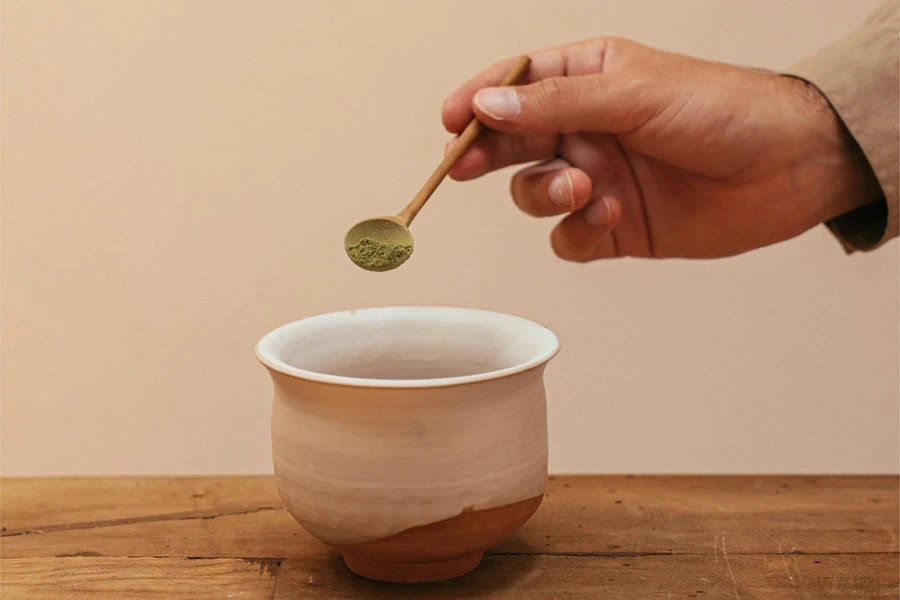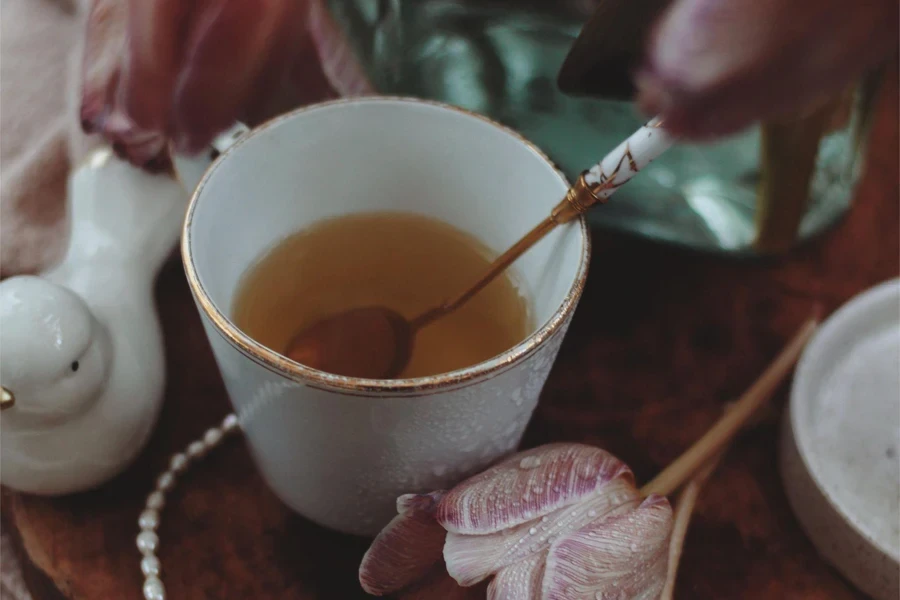In the world of culinary arts and dining aesthetics, the humble spoon has undergone a remarkable transformation, emerging as a key player in both household and professional realms. As we step into 2024, the evolution in spoon design is not just about utility but a blend of innovation, style, and comfort, reflecting the nuanced needs of modern consumers. These trends symbolize a fusion of tradition and technology, catering to diverse culinary practices and enhancing the overall dining experience. For business professionals and online retailers in the Home & Garden industry, staying abreast of these trends is crucial. The right choice of spoon not only meets functional requirements but also resonates with the evolving tastes and preferences of a discerning clientele.
Table of Contents:
1. Market overview
2. Different types and their features
3. Things to consider when selecting products
1. Market overview

The global spoon market, which includes spoons, provides insightful data relevant to the spoon market for 2024. According to the IMARC group, the spoon market was valued at US$ 34.9 Million in 2023. It is projected to reach a significant US$ 69.9 Million by 2032, exhibiting a Compound Annual Growth Rate (CAGR) of 7.8% during the period from 2024 to 2032. This growth can be attributed to several key factors, including rising environmental consciousness, government regulations against single-use plastics, innovations in food technology and material science, changing consumer preferences toward sustainability, and the desire for unique dining experiences.
Technological advancements have been pivotal in shaping the future of spoon designs. The integration of state-of-the-art technologies like artificial intelligence, machine learning, and blockchain into the manufacturing process is creating products that surpass traditional options in effectiveness and efficiency.
The market is also influenced by the growing popularity of high-performance and customized spoon designs, driven by customer preferences and the need for compliance with stringent emission regulations. Key players in the market are focusing on innovative and high-performance products and expanding their distribution channels to capture new customer segments. The market is characterized by a variety of products tailored to different user preferences, indicating a diverse and dynamic market landscape.

2. Different types and their features
In the ever-evolving world of dining and kitchenware, spoons, a seemingly mundane utensil, have undergone significant transformations. As we head into 2024, it’s essential to explore the different types of spoons, their unique features, and the innovations that are setting new trends.
Espresso coffee spoons: These spoons are specifically designed for the espresso coffee experience. Typically small, about 11 cm in length, they fit perfectly in espresso cups and shot glasses.The espresso spoon is not only ideal for stirring Italian-style espresso coffee but also versatile enough for soft-boiled eggs. The trend for 2024 sees a move towards more ergonomic designs and materials that enhance the coffee-tasting experience, such as heat-resistant and aesthetically pleasing finishes.
Tea spoons: A staple in any cutlery set, the teaspoon is used for mixing sugar or honey into tea, herbal tea, or coffee. It also serves as a measuring tool, with a capacity of about 5 ml. It is highlighted that the dual functionality of teaspoons – for both dining and cooking purposes. The upcoming designs are seeing a push towards more decorative elements, with intricate patterns and finishes that complement modern table settings.

Table spoons: The table spoon, or dinner spoon, is a vital component of any dining setup. It’s designed to fit comfortably in the mouth and is used primarily for the main course. Innovations in 2024 are focusing on combining functionality with elegance. Materials like stainless steel are being complemented with unique textures and handle designs for a more sophisticated dining experience.
Bouillon spoons: Often referred to as the gourmet spoon, the bouillon spoon is characterized by its slightly rounded shape and a smaller cup than the table spoon. It’s perfect for consuming broths and soups. The trend for these spoons in 2024 is leaning towards multifunctionality, with designs that cater to both formal and informal settings. The focus is also on materials that enhance the taste and temperature regulation of the soup.
Specialty spoons: These spoons, such as salad spoons, party spoons, rice spoons, and serving ladles, are designed for specific tasks. For instance, salad spoons, often paired with a salad fork, are perfect for serving salads. In contrast, party spoons, with creative handle designs, are ideal for finger foods and appetizers. Rice spoons, with their wide design, facilitate the serving of rice dishes. Serving ladles, deep with a long handle, are used for soups and sauces. The 2024 trend in specialty spoons is moving towards eco-friendly materials and innovative designs that cater to the aesthetic and practical needs of modern dining.

3. Things to consider when selecting products
When selecting spoons for retail or hospitality use, several crucial factors must be considered to ensure the products not only meet the functional requirements but also align with contemporary dining trends and customer expectations.
Material quality: The choice of material is paramount in spoon design. Stainless steel remains a popular choice due to its durability and ease of cleaning, as highlighted by sources like NBC News and WebstaurantStore. However, there is a growing trend towards more sustainable materials, such as bamboo, wood, and even edible options. These materials not only cater to the increasing environmental consciousness of consumers but also add a unique aesthetic to the dining experience. The market is seeing a shift towards materials that are both eco-friendly and offer a sense of luxury and quality.
Ergonomic design: The comfort and ease of use provided by a spoon’s design are critical, especially in a hospitality setting where the user experience is key. Ergonomic designs that fit comfortably in the hand and mouth are becoming more prevalent. This includes considerations for the length and weight of the spoon, as well as the shape of the handle and bowl. The curvature of spoons, as discussed in Sambonet Shop, is being tailored to enhance user comfort and efficiency, making them suitable for prolonged use in both casual and formal dining settings.

Suitability for different culinary settings: Spoons must cater to various dining situations. For instance, espresso spoons are smaller and designed for stirring in small cups, while table spoons are larger for main courses. Specialty spoons like bouillon spoons or salad spoons have specific functions and should be chosen based on the menu offered. Understanding the dining context, whether it’s a casual café or a formal restaurant, will guide the selection process.
Aligning with dining trends and customer expectations: In today’s market, spoons are not just tools for eating but also elements of the overall dining experience. Therefore, it is crucial to choose spoons that reflect current dining trends. This includes considering contemporary design trends, color preferences, and the overall theme of the dining establishment. For example, minimalist designs with clean lines and neutral colors may suit a modern, upscale restaurant, while more colorful and decorative designs might be preferred in a more casual or eclectic setting.
Adapting to new dining norms: With the evolving dining landscape, particularly in light of global shifts such as the pandemic, preferences for individualized and sanitary dining options have risen. This includes the use of single-use or easily sanitized spoon options in certain settings. The growing trend towards individualized dining experiences also calls for a more personalized selection of cutlery.

Conclusion
As we’ve explored, the world of spoons is evolving rapidly, with innovative designs and materials leading the way in enhancing dining experiences. For businesses in the Home & Garden sector, staying abreast of these trends is not just an opportunity but a necessity. Embracing these innovative designs and materials will not only satisfy the functional needs of their clientele but also resonate with their growing desire for sustainable, comfortable, and aesthetically pleasing dining options. As we move forward, these spoon trends offer a unique opportunity to enhance customer satisfaction and position businesses as forward-thinking and customer-centric in a competitive market.








